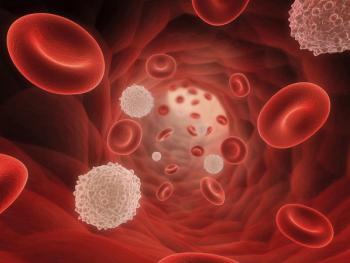
ctDNA Alterations May Identify Poor Outcomes in Metastatic CRPC
A new study found that patients with mCRPC had higher PSA response with enzalutamide vs abiraterone, but no difference in time to progression, and reported worse outcomes in those with quantifiable ctDNA.
Patients with metastatic castration-resistant prostate cancer (CRPC) had higher prostate-specific antigen (PSA) response when treated with enzalutamide compared with abiraterone/prednisone, but had no difference in time to progression or time to PSA progression, according to the results of a study (abstract
Abiraterone/prednisone and enzalutamide are both first-line therapies for treatment of metastatic CRPC but no trials to date have compared them head to head. Although they are frequently used sequentially, the optimal treatment sequencing has not been evaluated, Chi said.
This phase II study included 202 treatment-naive patients and randomly assigned them to abiraterone or enzalutamide with crossover at PSA progression. In addition, all patients had sequencing done of their plasma cell-free DNA and germline DNA. The primary endpoint was response and time to PSA progression after second-line therapy. Chi’s presentation focused on first-line treatment outcomes and correlations with deep targeted sequencing of circulating tumor (ctDNA) that occurred at baseline.
At 12 weeks, there were higher PSA response rates in patients assigned enzalutamide. A PSA decline rate of 50% or greater was seen in 77% of patients assigned enzalutamide compared with 55% of patients assigned abiraterone/prednisone (P = .0012). In addition, 20% of patients assigned abiraterone had a rising PSA as best response compared with 10% of patients assigned enzalutamide (P = .0501).
“Despite these differences in response rate, there was no difference in time to progression,” Chi said.
The time to confirmed PSA progression was 14.9 months for enzalutamide and 10.2 months for abiraterone/prednisone (hazard ratio [HR], 0.83; 95% CI, 0.55–1.25; P = .372). Similarly, the time to unconfirmed PSA progression was 8.0 months for enzalutamide compared with 7.4 months for abiraterone (HR, 0.83; 95% CI, 0.59–1.17; P = .283).
Finally, for time to progression-defined as first PSA confirmed progression, clinical or radiological progression, or death from disease-the median was 7.4 months for both arms.
There were no new safety signals with these drugs, Chi noted. Patients treated with abiraterone had hypertension, hypokalemia, and elevated liver enzymes. With enzalutamide there were more patients with grade 2 fatigue and one patient with seizure.
About 60% of patients had a quantifiable level of ctDNA, and these patients had a worse outcome. Their median time to progression was 5.4 months compared with 12.0 months (HR, 2.05; 95% CI, 1.42–2.96; P < .001).
“Having a quantifiable ctDNA was also associated with measure of higher disease burden such as a higher PSA, higher lactic acid dehydrogenase, and a higher alkaline phosphatase,” Chi said.
Finally, the researchers found genomic correlates with time to progression. Patients with a BRCA2/ATM truncating mutation had a poorer prognosis, with a median time to progression of 1.8 months compared with 8.0 months in patients negative for these mutations (HR, 5.34; 95% CI, 2.84–10.03; P < .001). In addition, TP53, RB1, AR, and PI3K pathway alterations were all associated with shorter time to progression. In multivariate analyses that included clinical factors, BRCA2/ATM, TP53, and PI3K pathway alterations remained significantly associated with shorter time to progression.
Finally, AR genomic structural rearrangements encoding for truncated AR were detectable in ctDNA from treatment-naive metastatic CRPC and may identify primary resistant disease, Chi noted.
Newsletter
Stay up to date on recent advances in the multidisciplinary approach to cancer.


















































































